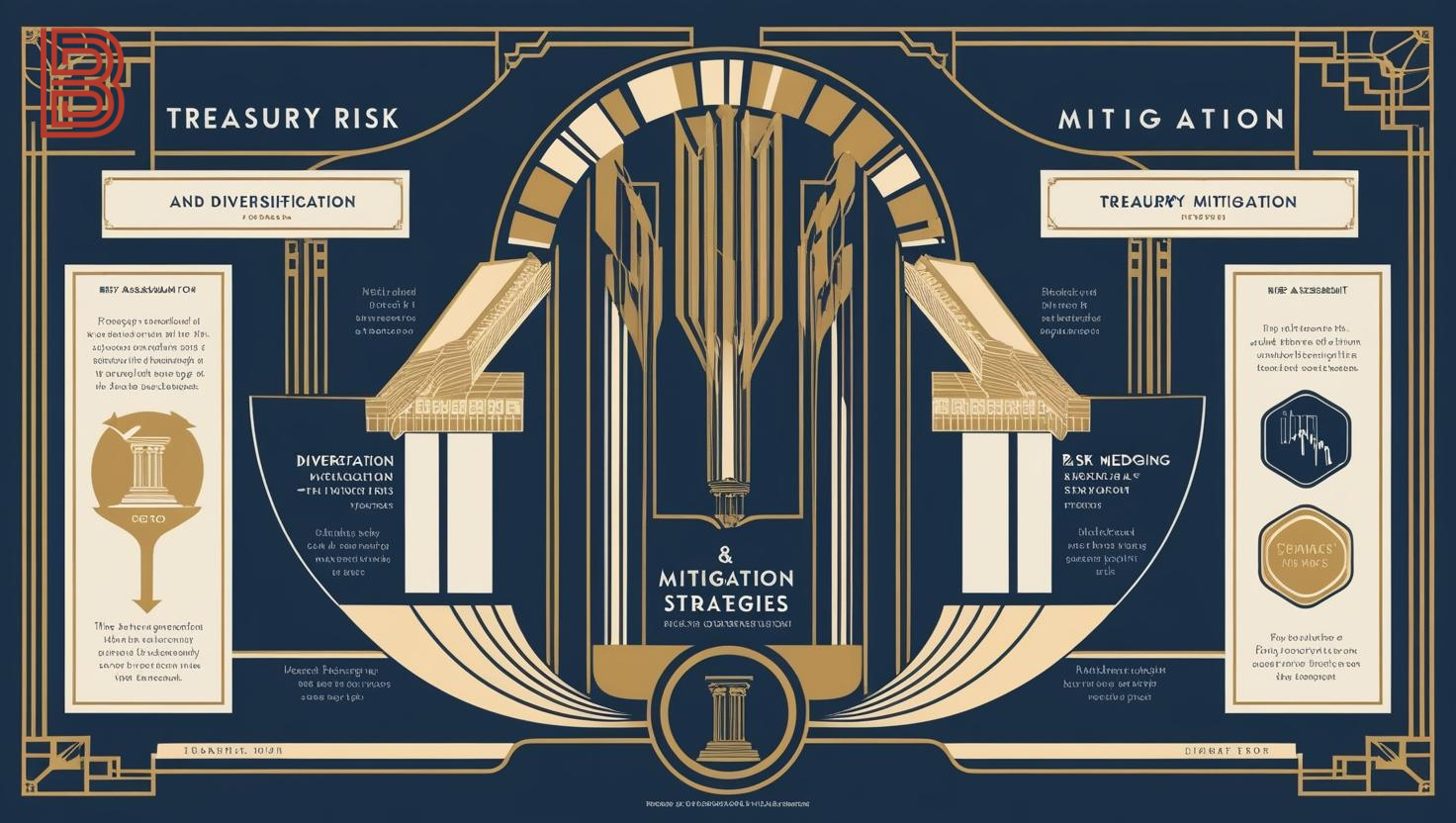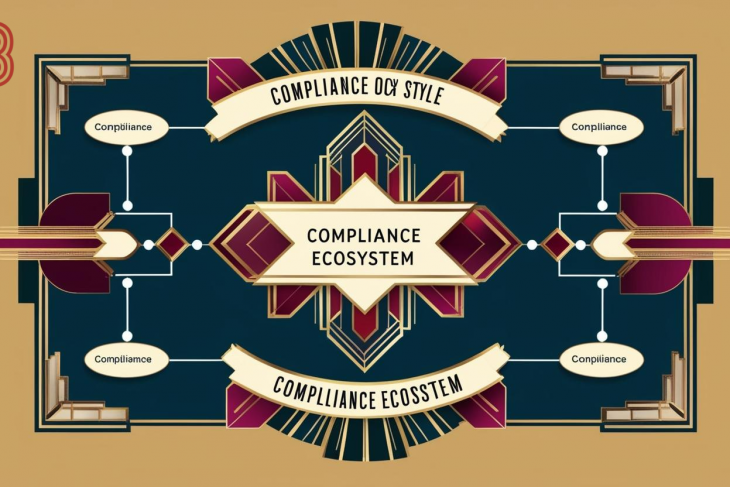
Introduction
In the modern business landscape, financial risk management is a cornerstone of effective corporate governance. Among the myriad components of financial risk management, treasury risk stands out due to its direct impact on a company’s liquidity, profitability, and overall financial stability. Treasury risk encompasses various risks related to the management of a company’s cash, investments, funding, and financial instruments. As companies expand and operate in increasingly complex financial environments, the importance of identifying, managing, and mitigating treasury risk becomes ever more critical.
Understanding Treasury Risk
Treasury risk refers to the set of financial risks associated with the activities managed by the corporate treasury function. These risks arise from both internal and external factors and can significantly affect an organization’s ability to meet its financial obligations, maintain operational stability, and achieve strategic goals.
The primary types of treasury risks include:
Liquidity Risk: The risk that a company will not be able to meet its short-term financial obligations due to inadequate cash flow or liquid assets.
Interest Rate Risk: The exposure to fluctuations in interest rates that can affect the cost of borrowing or the return on investments.
Foreign Exchange (FX) Risk: The risk of losses due to changes in exchange rates affecting transactions denominated in foreign currencies.
Credit Risk: The risk of loss arising from a counterparty’s inability or unwillingness to meet their financial obligations.
Operational Risk: Risks arising from failures in internal processes, systems, people, or external events, including fraud, errors, and technological failures.
Each of these risk types can have a profound impact on a company’s financial health, making their identification and mitigation essential.
Liquidity Risk and Its Mitigation
Liquidity risk is arguably the most immediate and critical form of treasury risk. It refers to the possibility that a company may not have sufficient cash or liquid assets to meet its short-term obligations, such as paying suppliers, employees, or servicing debt.
Causes of Liquidity Risk:
Poor cash flow forecasting
Unexpected large expenses
Deterioration in working capital
Lack of access to credit facilities
Mitigation Strategies:
Cash Flow Forecasting: Regular and accurate forecasting of cash inflows and outflows helps identify potential liquidity gaps.
Liquidity Buffers: Maintaining a buffer of high-quality liquid assets (HQLAs) ensures readiness to meet unforeseen cash needs.
Diversified Funding Sources: Access to various funding sources, such as revolving credit facilities, commercial paper, or asset-backed loans, reduces dependency on any single source.
Centralized Treasury Operations: Centralizing treasury functions enables better visibility and control over group liquidity.
Interest Rate Risk and Its Mitigation
Interest rate risk affects both sides of the balance sheet. It can increase borrowing costs or reduce investment returns due to changes in interest rates.
Causes of Interest Rate Risk:
Mismatch between fixed and variable rate instruments
Market volatility
Economic policy changes
Mitigation Strategies:
Interest Rate Swaps: These derivative instruments allow companies to exchange variable interest rate payments for fixed payments, thereby stabilizing interest expenses.
Caps and Collars: These instruments set a ceiling or floor on interest rates, protecting against unfavorable rate movements.
Debt Structuring: Balancing fixed and floating-rate debt optimizes interest rate exposure.
Scenario Analysis and Stress Testing: Evaluating the impact of various interest rate scenarios helps in strategic planning and decision-making.
Foreign Exchange Risk and Its Mitigation
FX risk arises when a company conducts business in multiple currencies. It affects revenues, costs, and ultimately, the bottom line.
Causes of FX Risk:
Fluctuating exchange rates
Cross-border transactions
Currency mismatches in assets and liabilities
Mitigation Strategies:
Natural Hedging: Aligning revenues and expenses in the same currency to reduce net exposure.
Forward Contracts: Agreements to buy or sell currency at a predetermined rate in the future.
Options and Swaps: Provide flexibility and protection against adverse currency movements.
Centralized FX Management: Centralizing currency risk management can improve efficiency and control.
Multicurrency Accounts: Maintaining accounts in ous currencies to manage inflows and outflows more effectively.
Credit Risk and Its Mitigation
Credit risk refers to the potential loss due to a counterparty’s failure to fulfill its financial obligations.
Causes of Credit Risk:
Default by customers or financial institutions
Deterioration in credit quality
Concentration of exposure
Mitigation Strategies:
Credit Assessments: Conducting rigorous credit checks and ongoing monitoring of counterparties.
Credit Limits: Establishing exposure limits for customers and financial partners.
Collateral and Guarantees: Securing exposures with collateral or third-party guarantees.
Diversification: Avoiding over-reliance on a single customer or cial institution.
Credit Insurance: Insuring receivables against the risk of customer default.
Operational Risk and Its Mitigation
Operational risk encompasses failures in internal processes, systems, or human errors that can disrupt treasury operations.
Causes of Operational Risk:
System failures or cyberattacks
Fraud or employee misconduct
Inadequate controls or procedures
Regulatory non-compliance
Mitigation Strategies:
Treasury Management Systems (TMS): Automation and integration reduce errors and enhance data accuracy.
Segregation of Duties: Assigning different roles for transaction initiation, approval, and reconciliation minimizes fraud.
Regular Audits and Compliance Checks: Ensures adherence to internal policies and external regulations.
Training and Awareness: Equipping staff with knowledge and skills to manage risks effectively.
Business Continuity Planning: Preparing for contingencies such as system outages or natural disasters.
Integrated Risk Management Approach
Treasury risk should not be managed in isolation. An integrated risk management approach ensures that interdependencies between different risk types are considered, and mitigation strategies are aligned with the overall corporate strategy.
Key Elements of an Integrated Approach:
Risk Identification and Assessment: Systematic identification and evaluation of risks across the organization.
Risk Appetite Framework: Defining the level of risk the organization is willing to accept.
Policy Development: Establishing comprehensive treasury policies covering liquidity, FX, interest rate, and credit risk.
Governance and Oversight: Board-level oversight and clear lines of accountability.
Technology and Analytics: Leveraging data analytics and risk management software for real-time monitoring and decision-making.
Case Studies in Treasury Risk Mitigation
Case Study 1: Managing Liquidity During Economic Downturns
A multinational corporation facing declining revenues during a recession used advanced cash flow forecasting tools and secured additional credit lines to maintain liquidity. This proactive approach helped it avoid defaults and continue operations without disruptions.
Case Study 2: Interest Rate Hedging in Volatile Markets
A company with significant floating-rate debt implemented an interest rate swap strategy to lock in fixed rates. This move protected it from rising interest rates and stabilized financing costs.
Case Study 3: FX Risk Management in Emerging Markets
A firm with extensive operations in South America faced currency depreciation risks. By centralizing FX management and using forward contracts, it minimized translation losses and protected profit margins.
The Role of Technology in Treasury Risk Management
Technological advancements have transformed treasury operations, enabling more efficient risk management through automation, real-time data access, and predictive analytics.
Benefits of Technology:
Enhanced Visibility: Real-time dashboards and reporting tools offer clear insights into liquidity, exposures, and positions.
Automation: Reduces manual errors and improves process efficiency.
Predictive Analytics: Helps forecast risks and trends, enabling proactive responses.
Integration: Systems that integrate with ERP and banking platforms streamline operations and improve control.
Regulatory Landscape and Compliance
Regulatory requirements also shape treasury risk management practices. Compliance with global and local financial regulations is essential to avoid penalties and ensure operational integrity.
Key Regulatory Considerations:
Basel III Liquidity Coverage Ratio (LCR): Affects how banks and financial institutions manage liquidity.
IFRS and GAAP Standards: Influence how financial instruments and hedging activities are accounted for.
Anti-Money Laundering (AML) and Know Your Customer (KYC): Essential for operational risk mitigation.
Summary
Treasury risk management is a critical aspect of a company’s overall risk management strategy. Given the complexities of modern financial environments and global operations, effective identification and mitigation of treasury risks can significantly enhance financial resilience and strategic agility. By adopting a holistic approach—integrating liquidity, interest rate, FX, credit, and operational risk management—companies can safeguard their financial stability and create value for stakeholders. Through a combination of sound policy frameworks, technological tools, and continuous monitoring, treasury departments can navigate uncertainties and contribute to long-term organizational success.
In an ever-evolving financial landscape, the ability to adapt and respond to treasury risks is not just a protective measure but a strategic imperative.




















